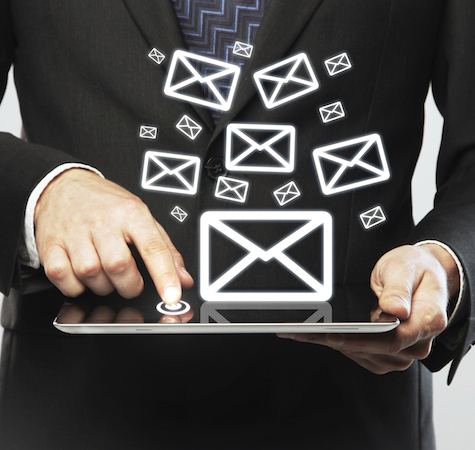 Last week, Brian and I attended the 2015 Email Evolution Conference in beautiful, sunny Miami. In addition to the brilliant weather, five-star accommodations and a balmy, evening yacht excursion (a nice treat before heading back to a frigid Chicago), we were privy to enlightening discussion on some of email marketing’s most hot-button issues. Couldn’t make it to this year’s EEC? Have no fear! We’re here to shed light on some of the most talked-about topics from last week’s show.
Last week, Brian and I attended the 2015 Email Evolution Conference in beautiful, sunny Miami. In addition to the brilliant weather, five-star accommodations and a balmy, evening yacht excursion (a nice treat before heading back to a frigid Chicago), we were privy to enlightening discussion on some of email marketing’s most hot-button issues. Couldn’t make it to this year’s EEC? Have no fear! We’re here to shed light on some of the most talked-about topics from last week’s show.
Here are three of the most important conversations from the 2015 Email Evolution Conference:
Better Engagement = Better Deliverability
One of the recurring themes from last week’s event was deliverability-more specifically, what information Internet Service Providers are willing to share on the topic.
For years, marketers have been making educated guesses on the best methods for ensuring their messages reach subscriber inboxes. This has proven a difficult feat as ISPs keep their algorithms under lock and key. But, last week, professionals from the abuse and fraud departments of Gmail, AOL, Comcast and Outlook/Hotmail took the stage to demystify deliverability.
While they didn’t share trade secrets, the ISP representatives made one thing clear: If you want to stay in someone’s inbox, you need to make sure they’re interacting with your messages. While lack of engagement may not affect a brand’s sender reputation, it can affect their ability to reach consumers on a one-on-one basis. Everyone’s inbox is different. In other words, while you may have a flawless sender reputation, if one subscriber routinely deletes your messages without opening, you could end up in their spam folder.
Bottom line: Be relevant and engaging.
Personalization is as Hot as Ever
Two years ago, the big question was “Should I personalize?” Obviously, the answer was a resounding “YES!”
Now, however, the question we hear most often is, “How do I improve my personalization?” Last week, the collective response was “By using data.” Brands are using data in all sorts of unique and creative ways. For example, Shubert Organization uses consumer data to personalize the messages subscribers receive based on their geographic location, the time they purchase and the date of the event they purchased tickets to attend. Some brands use data to personalize by lifestyle, income, profession, purchase history and any other information relevant to their industry and objective.
Unfortunately, this path isn’t always simple. As one marketer asked, “What can you do if you don’t have enough behavioral data to personalize?” In these situations, the answer is still all about data. You can at least use third party data as a way to better understand your personas and tailor your messages to meet their needs.
Bottom line: Use data to personalize.
If You Can’t Be Responsive, At Least Be Mobile Friendly
Given the rise of mobile usage, switching to a responsive email design seems a natural progression. After all, who doesn’t want their messages rendering better on the mobile devices consumers prefer to use during a significant portion of their day?
For some brands, though, it’s not a question of whether or not responsive design works better; it’s a question of whether or not they have the resources to pull off such a major change. As one EEC attendee brought up, responsive design can be pricey-especially for a company without its own in-house developers and designers. According to thought leaders in email marketing, if you can’t adopt a responsive design, at least make efforts to be more mobile friendly. Marketers can achieve this through single-column design, larger buttons and clearer CTAs.
Bottom line: Improve mobile design by whatever means possible.
Overall, the primary takeaway from this year’s Email Evolution Conference is, although the inbox and consumer habits are changing, marketers are prepared to adapt. And, of course, email still remains one of the most important channels for reaching your customers.
Interested in learning more about how to use customer data to improve personalization and deliverability? Check out our guide The Recipe for Email Marketing Success.
 Affiliate Marketing
Affiliate Marketing Automotive
Automotive eCommerce and Retail
eCommerce and Retail FinTech
FinTech LeadGen
LeadGen Nonprofit and Political
Nonprofit and Political Payments
Payments Technology Platforms
Technology Platforms Tourism and Hospitality
Tourism and Hospitality
 Last week, Brian and I attended the
Last week, Brian and I attended the 